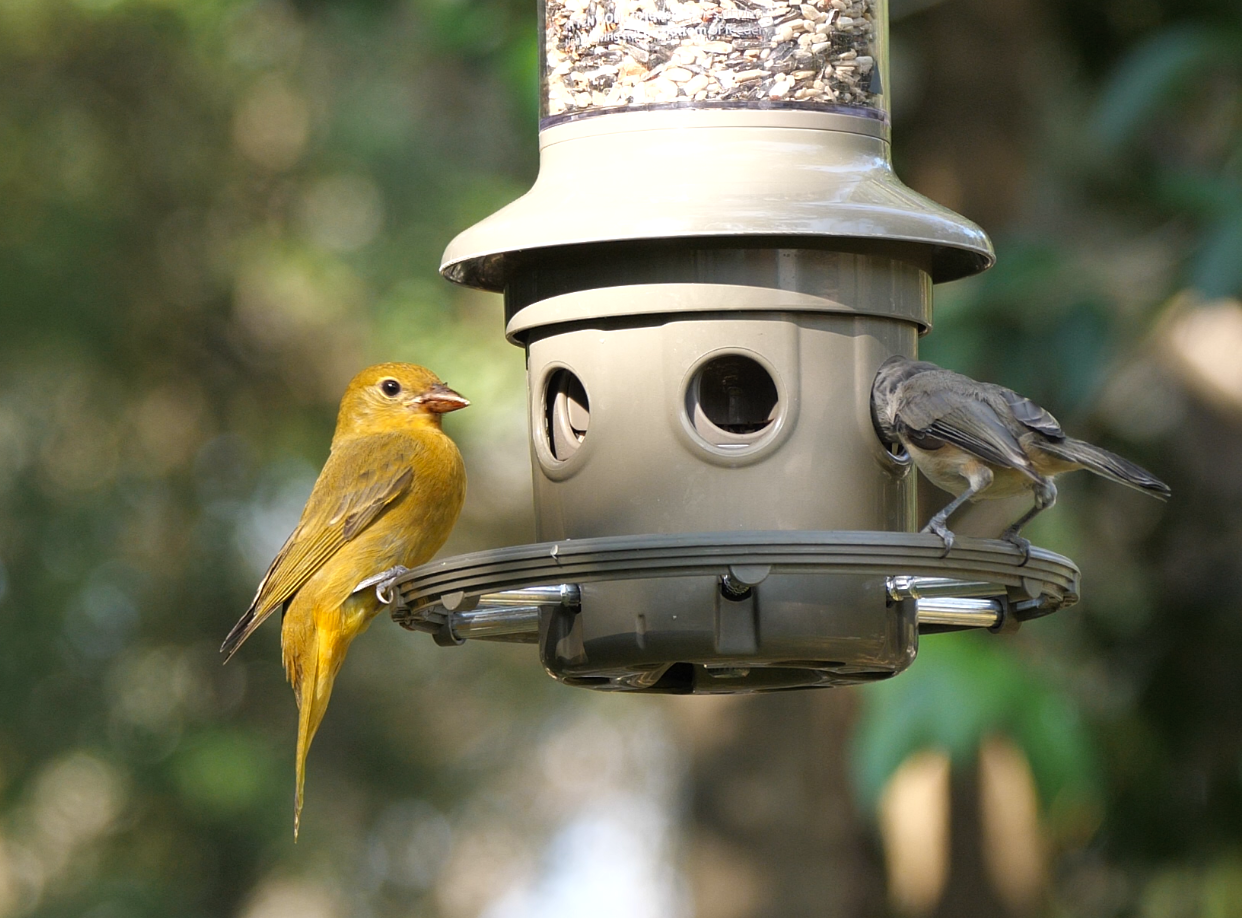On the Path of Fall Migration - Birds
We’re noticing a shift in bird activity in our yard right now. Over the hot summer months, there were some days when we had anywhere from 20-30 birds in our yard at one time. Resources were scarce, and we had much-needed water and food available for them.
As the rain and cooler temperatures moved through the country last week, birds were on the move for the beginning of fall migration. Here in Central Texas, we’re part of the Central Flyway (a map and a site where you can enter your county in the United States for real-time stats) for migrating birds. We were lucky enough to have some very colorful, albeit temporary, visitors last week. At first, my husband spotted just one little black and orange bird hiding in the greenbelt. A few days later, the bird was on the feeder, but this elusive little guy would tuck back into the greenbelt as soon as he noticed movement at the back window or when we stepped outside.
Determined to figure out what type of bird it was, I did a little research. Sure enough, his coloration matched that of a Baltimore oriole. After learning that Baltimore orioles eat oranges and bananas while wintering in Costa Rica and other Central American countries, I set orange halves on the fence posts in our backyard for them to eat before traveling further south. It’s pretty amazing to think that the same birds that are flying through this area eating our oranges will be welcomed with citrus in Costa Rican communities. This phenomenon always reminds me that birds and butterflies see this part of the world as one continuous landmass without the borders created by humans.
While the weather was still hot, we also spotted a few wasp-eating Summer Tanagers with their orangish-red mottled feathers, a young woodpecker, as well as our regulars which included the titmice (with constant bedhead), chickadees, goldfinches, Carolina wrens, cardinals, white wing dove, blue jays, and hawks.
Join Lights Out Texas - Two billion birds are on the move! If you are in the path of migration birds this fall, Audubon encourages us to “turn off non-essential indoor and outdoor lights from 11 p.m. – 6 a.m. until November 30 to protect traveling birds”.
Find out more about your local birds and those migrating through by checking out The Cornell Lab of Ornithology-All About Birds website, BirdNote podcast, Merlin BirdID app, Audubon Texas, and Audubon.
What birds are you seeing in your area right now? Share with us in the comments below this post.
Recommended Reading
I’m looking forward to picking up Better Living Through Birding: Notes from a Black Man in the Natural World by Christian Cooper so that I can learn more about his experience and the joy of birding.
If you’d like to learn more about Christian Cooper, be sure to read Q&A: Catching Up With Christian Cooper, Author & Host Of Extraordinary Birder, and check out his new television show Extraordinary Birder on National Geographic.
This week I began listening to The Power of Trees: How Ancient Forests Can Save Us if We Let Them by Peter Wohlleben (audiobook link). If you love learning about trees, this audiobook guides you through the hidden secrets of ancient forests in Europe. Filled with scientific information about forests and how they adapt, it’s a dense read and one you’ll most likely want to savor a little at a time.
The idea for 52 Seasons came from a book called Wabi Sabi: Japanese Wisdom for a Perfectly Imperfect Life by Beth Kempton. In her book, she introduced the idea of micro-seasons, and I was intrigued. In the classical Japanese calendar, there are 72 micro-seasons, each lasting around 5 days.
I thought about the many micro-seasons that happen for all of us, not only in nature but in the ways we make changes over time in all the seasons of our lives. I modeled my blog around writing 52 posts a year based on the changes happening outside and in my life.
Last week, I came across this beautiful 72 Seasons calendar app. The app shares seasonal fish, veggie, and fruit suggestions for the season, a haiku, and seasonal activities. After reading more on their website, I realized that the app will be discontinued soon, but thought I would share its beauty before then. This week on the app, the season was “The Swallows Leave” and the next season is called “Thunder Lowers its Voice.” Isn’t that lovely?
If you haven’t stumbled across Ann Collins and her writing on Microseasons, may I introduce you? I’ve found her writing to be a lovely way to notice and reflect on the changing of seasons.
Microseasons
A Creative Field Guide to Savoring 72 Seasons of the Year
In next week’s Reading Seasons post, I’m sharing the books I read in September if you’re looking for a few ideas to add to your fall bookshelf. Enjoy your weekend!
